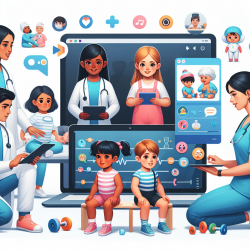Introduction
In the ever-evolving field of cognitive rehabilitation, understanding which patients benefit most from different therapeutic approaches is crucial. A recent study titled "Regional brain volume prior to treatment is linked to outcome after cognitive rehabilitation in traumatic brain injury" provides groundbreaking insights that can transform how practitioners approach cognitive rehabilitation for traumatic brain injury (TBI) patients.
Key Findings
The study highlights the importance of regional brain volume as a predictor of cognitive rehabilitation outcomes. Specifically, it found that larger regional brain volumes in midline fronto-parietal regions, including the anterior and posterior cingulate cortices, were associated with more significant improvements in cognitive control functions. These regions are known for their role in cognitive processing and are often altered following TBI.
Implications for Practitioners
For practitioners, these findings suggest a more personalized approach to cognitive rehabilitation. By utilizing advanced neuroimaging techniques to assess brain volume before treatment, practitioners can better predict which patients are likely to benefit from specific rehabilitation strategies. This can lead to more targeted interventions, improving the efficiency and effectiveness of rehabilitation programs.
Encouraging Further Research
While the study provides valuable insights, it also opens the door for further research. Future studies should explore the predictive value of brain volume in response to specific treatments at an individual level. Moreover, integrating multimodal imaging parameters could enhance the understanding of treatment responses and aid in patient stratification.
Conclusion
This study underscores the potential of neuroimaging in cognitive rehabilitation, offering a pathway to more personalized and effective treatment plans for TBI patients. As practitioners, staying informed about such advancements and incorporating them into practice can significantly enhance patient outcomes.
To read the original research paper, please follow this link: Regional brain volume prior to treatment is linked to outcome after cognitive rehabilitation in traumatic brain injury.










